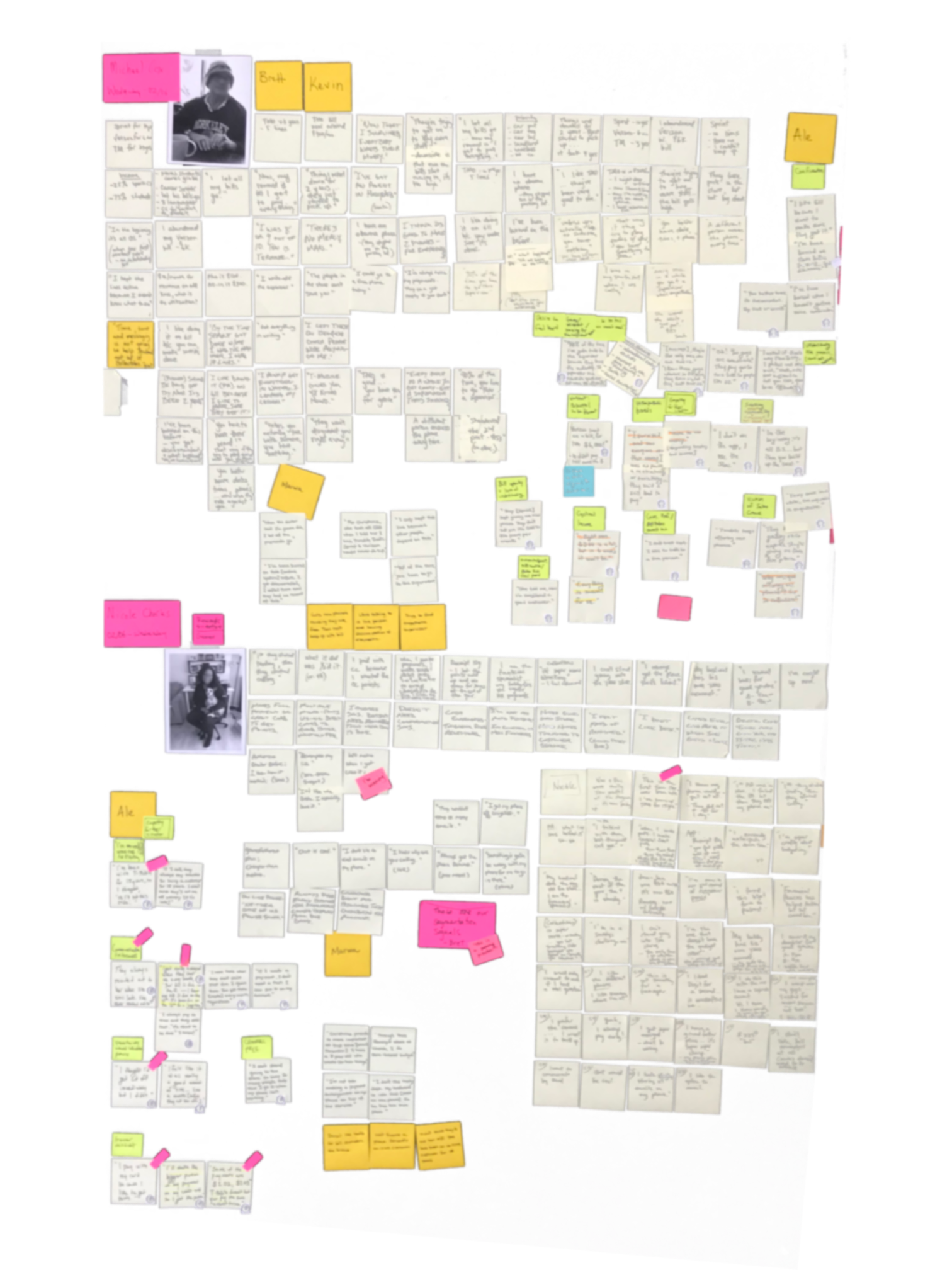fern
Fern's approach is all about working together.
Design for Social Systems
is our collection of methodologies that leverage design, social science, and radical collaboration to address complex challenges.
HUMAN-CENTERED DESIGN
"Design for Human Needs"
Human-Centered Design generates creative solutions by directly responding to the needs and desires of the individual the design is intended for.
ETHNOGRAPHY
Ethnographic research involves studying people’s behaviors and environments, as well as conducting interviews, in order to surface underlying motivations, needs, and pain-points that drive our behavior.
Brainstorming & Creative Play
We practice brainstorming techniques pioneered by Stanford and Carnegie Melon to come up with tons of divergent ideas that break the mold.
Prototyping & Validating
Building things quickly and cheaply allows us to efficiently learn what works and what doesn't. We create many versions of a design solution and test them to see what works.
Ownership & Empowerment
"Design for Cultural Context"
Having a supportive community means inviting people in, listening, and meeting them where they're at.
CO-Design & ownership
We use participatory techniques and maximize community involvement in order to create something useful that your community feels ownership over and excitement about.
Practical Participation
Creating something that’s useful in a variety of contexts means meeting people where they’re at. We uncover participation models designed to work when your people need it and want it most.
Shareable Stories
Ideas that spread are actionable, connected, and extensible. We use social science insights and leverage cultural and technological trends to tell stories that spark action and spread.
HUMAN BEHAVIOR
"Design for Human Behavior"
Advancements in behavioral science help us understand how and why we make decisions, and how to design for our not-so-rational brains.
Remembered Experience
Emotional responses and averaging available information are highly influental in how we remember experiences. We understand people's emotional journeys and design interventions that make the lows a little more tolerable and the highs a little more delightful.
Choice architecture
The way we make decisions is not as rational as we once thought. Behavioral economics has found that the best way to design for choice is to give the chooser an informed, objective understanding of their options, and anticipate predictable irrationality by nudging them toward the option that is in their best interest.
Behavior change
Understanding how to design for behavior change is an essential consideration when releasing a new product or service, or trying to do anything that will cause a change to someone's routine. We use methodology pioneered by the Behavior Design Lab at Stanford, which leverages relationships between motivation, ability, and a prompt.
INTERNAL COLLABORATION
"Design for Iterative Impact"
Each project has unique needs. We work with you to determine what will lead to success and build a plan together.
ROADMAPPING
A quality design is useless without an achievable plan to launch and continually iterate upon it. We're committed to making our designs real, by helping you develop a strategic plan to launch and nurture something new.
inclusive feedback
A quality design is the result of diverse collaborators coming together to share their expertise. We work with your key stakeholders to build a collaboration plan that identifies necessary guidance needed for project success.
Project metrics
Change the metric to change the behavior. We co-design metrics with your organization not only to precisely evaluate project outcomes, but also to incentivize individual behavior that pushes toward organizational goals.
